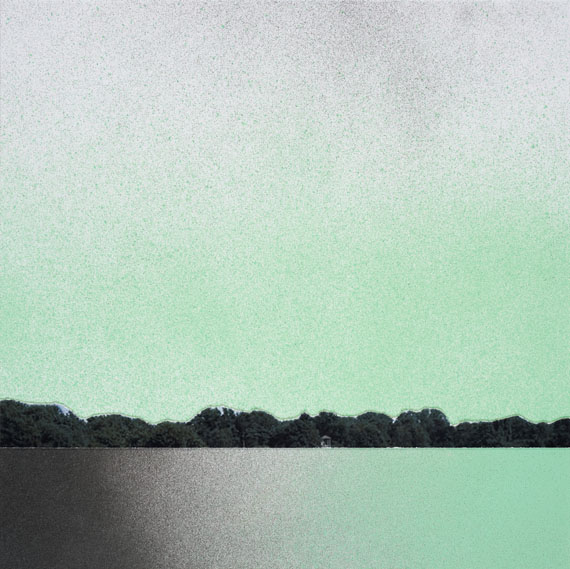
LAND__SCOPE
Photographic Works from Roni Horn to Thomas Ruff in the DZ BANK Art Collection / Fotoarbeiten von Roni Horn bis Thomas Ruff aus der DZ BANK Kunstsammlung
Claudia Angelmaier » Ursula Böhmer » Olivo Barbieri » Mona Breede » Marc Cellier » Lucinda Devlin » Caroline Dlugos » William Eggleston » Dörte Eißfeldt » Beate Gütschow » Jochen Gerz » Carsten Höller » Axel Hütte » Raphael Hefti » Dan Holdsworth » Roni Horn » Magdalena Jetelová » Sven Johne » Peter Keetman » Andrej Krementschouk » Robert Longo » Andreas Müller-Pohle » Richard Mosse » Walter Niedermayr » Simone Nieweg » Inge Rambow » Heinrich Riebesehl » Klaus Rinke » Thomas Ruff » Jörg Sasse » Adrian Sauer » Stephan Schenk » Maria Sewcz » Stephen Shore » Hiroshi Sugimoto » Anna Vogel » Sascha Weidner » Manfred Willmann »
Exhibition: 30 Nov 2018 – 26 May 2019
Thu 29 Nov 19:00
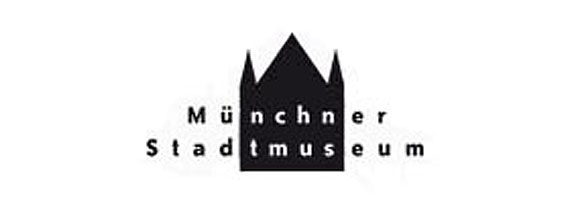
Münchner Stadtmuseum
St.-Jakobs-Platz 1
80331 München
+49 (0)89-23322370
stadtmuseum@muenchen.de
www.muenchner-stadtmuseum.de
closed until 2027
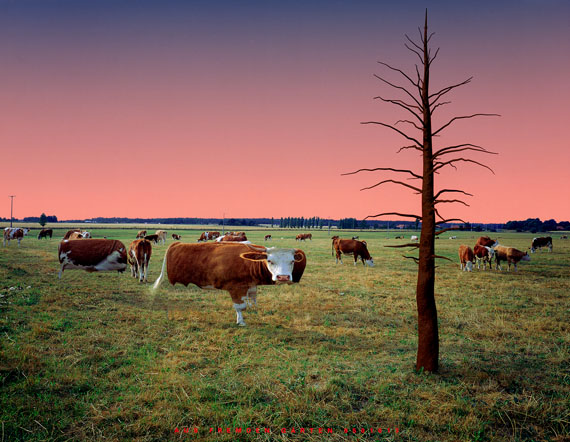
"LAND__SCOPE"
Photographic Works from
Roni Horn to Thomas Ruff in the DZ BANK Art Collection
Exhibition: 30 November, 2018 – 26 May, 2019
Opening: Thursday, November 29, 7pm
This exhibition is dedicated to landscape photography in contemporary art. The works from the DZ BANK Art Collection offer a broad overview of different themes to show that nature photography is not merely another version of traditional painting but is governed by new representational conventions. The exhibition examines images from the last five decades right up to the digital age to explore the ways in which the specific medium of photography has depicted the world. Photographic landscapes, both analog and digital, often address public debates and political discourses, and this will be a further focus of the exhibition.
Landscapes, as aesthetic phenomena and as the product of cultural associations, have always served as signifiers of a great variety of projections, world views, and narratives. They promote identification or use abstraction to create alienation. Current debate about our new geological age – the anthropocene period, an epoch in which human activity has been the dominant influence on geology, climate and the environment – has provided the stimulus to take a new look at the artistic appropriation of landscapes, and to pose questions, as asking, for example, what these depictions tell us about the relationship between humans and nature. Or, indeed, what landscapes represent at the present time, in a world determined by globalization and technological change; and with what kind of philosophical, environmental, and economic significance are they freighted. Finally, how (trans)historical, (trans)cultural, geopolitical, and hegemonic systems determine how we perceive nature and terrain.
The exhibition title references the theme of the project. It combines "landscape" with "scope", taken from the Greek "σκοπεῖν" (skopein = to watch or look at) understood in all its senses - from viewing instrument to panorama to range of application. The aim is to showcase and analyze this wide range of landscapes both in contemporary art and in environmental and socio-political debate. The exhibition is divided into seven broad sections that address the many different kinds of landscape photography that currently exist.
The focus of the Ideal Landscapes section is on composition, modes of portrayal, and traditional images, picturesque examples of nature observation. The works by Beate Gütschow, Stephen Shore, and Sascha Weidner chosen for this section, adapt and subvert the largely Western art history canon for this type of composition. They question the interrelationships between aesthetic and moral discourse in landscape painting that go as far back as the Renaissance.
Abandoned Land, with works by Inge Rambow, Walter Niedermayr, and Andreas Müller-Pohle, is dedicated to a broad range of transformations in the landscape. From the conquest of the Alps by mass tourism, to post-industrial wastelands, the photos depict various forms of destruction of the natural world. Reflecting the methods of microbiological water analysis, they train their sights on problems of site-specific water pollution in our rivers.
Political Territories deals with arenas of historical and current conflicts. Large-format tapestries by Stephan Schenk, with detailed views of natural and apparently everyday terrain, hint at the battlefields of World War I. Meanwhile, the illegal settlement of the exclusion zone around the Chernobyl nuclear site in the work of Andrej Krementschouk bears testimony to a lack of alternatives, and to the people’s will to remain in their homeland, despite all potential health risks. The large-format thermal image of a refugee camp in Turkey, taken by artist Richard Mosse, using a military camera that records heat up to a distance of 30 kilometers, subverts the usual composition of a typical ideal landscape by implying that its "inhabitants” are in a precarious situation.
Landscape as Concept brings together works that approach the genre as a background for media-reflexive, art-theoretical, and abstract observations, and adopt those as their own. Klaus Rinke establishes parameters of time and space by his use of repeated, staggered images of himself within the landscape. Claudia Angelmaier, who photographed the motif of Albrecht Dürer's linden trees in various exhibition catalogs, alludes to the discrepancy between the original and its reproduction. Questions about what we actually see in a picture, and whether we can really trust our eyes, also arise in Sonja Braas’ photographs of deceptively real simulations of natural scenes as miniature models and dioramas, or in the form of preserved domestic animals, which Marc Cellier stages in nocturnal cityscapes.
Nature’s Formative Power explores the idea that pictorial structures are inherent in nature or can be elicited from it. In Olivo Barbieri’s photographs, the terrain on the surface of mountain massifs evolves into abstract images. Serial observations of a seascape made over a long period of time by Lucinda Devlin illustrate the enormous changes that can be wrought in a location’s appearance by weather, time of day, or season. Photography pioneer Henry Fox Talbot’s argument that a photograph is created with "The Pencil of Nature" is echoed in the camera-free photography of artist Raphael Hefti. While the image evokes associations with astronomical imagery, the photographic paper was actually exposed with the aid of highly flammable lycopod (moss) spores.
Agriculture and allotment gardening are the themes of Agricultural Landscapes. Photos of densely planted cabbage fields by Heinrich Riebesehl, allotments and short-term use of fallow land by Simone Nieweg, and elaborate hay sculptures by Claus Bury all reflect the appearance of our latitudes, as they have been shaped and molded over centuries. As a whole, it represents an ironic rupture in the imperturbable romanticization of "country life," as can be seen in the works of Manfred Willmann.
Finally, Digital Landscapes is dedicated to the use of computers in creating and processing images of nature. Works by Jörg Sasse and Caroline Dlugos from the 1990s were still based on analog photographs, but now, with digital post-processing heralding a growing instability of the photographic medium, complete landscapes are digitally constructed, as can be seen in the works of Dan Holdsworth. At the same time, the Internet increasingly offers public access to photographs from professional image archives, such as those of NASA, enabling artists like Thomas Ruff to appropriate those visual worlds for his own use, including the experience of a three-dimensional planet Mars exhibited in a museum environment.
This group exhibition of more than 130 works of art created between 1972 and 2018 traces the rich variety of nature photography up to the present day, using photography to throw into stark relief the development, and often transcendence of the landscape genre.
This project is a cooperative venture of the DZ BANK ART Collection and the Münchner Stadtmuseum.
The exhibition is accompanied by a 160-page catalog published by Snoeck with contributions by Volker Demuth, Ulrich Pohlmann, Christina Leber, Dietmar Mezler, Erec Gellautz und Katharina Zimmermann. It can be purchased at the museum’s ticket office or from the online shop for
€19.90.�
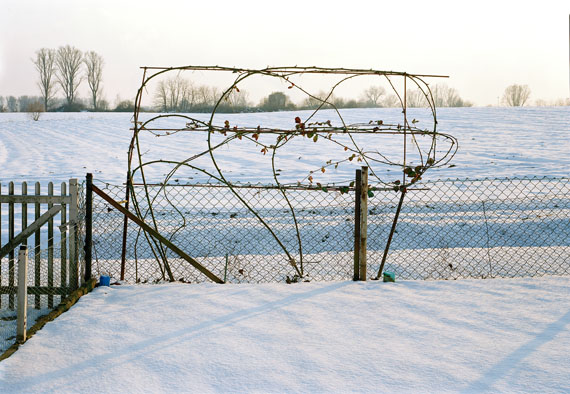
"LAND__SCOPE"
Fotoarbeiten von Roni Horn bis Thomas Ruff
aus der DZ BANK Kunstsammlung
Ausstellung: 30. November 2018 bis 26. Mai 2019
Eröffnung: Donnerstag, 29. November, 19 Uhr
Die Ausstellung widmet sich der Landschaftsdarstellung in der zeitgenössischen Fotokunst. In einer breiten Übersicht mit Werken aus der DZ BANK Kunstsammlung wird durch verschiedene thematische Schwerpunkte verdeutlicht, dass im fotografischen Naturbild nicht nur die tradierte malerische Gattung adaptiert wird, sondern vielmehr neue Darstellungskonventionen hervorgebracht werden. Mit dem Blick auf Bilder der letzten fünf Jahrzehnte wird der medienspezifischen Erschließung der Welt bis ins digitale Zeitalter nachgegangen. Ob analog oder computerbasiert, den fotografischen Landschaften liegen oft gesellschaftliche Debatten und politische Diskurse zugrunde, die auch in der Ausstellung unter die Lupe genommen werden.
Landschaftsdarstellungen sind, als ästhetische Phänomene und Produkte kultureller Konnotation, seit jeher Bedeutungsträger für eine große Vielfalt an Projektionen, Weltentwürfen und Geschichtsschreibungen. Sie dienen Identifikationsprozessen oder sind durch Abstraktionen verfremdet. Die anhaltenden Debatten um ein neues Erdzeitalter – dem Anthropozän, in dem der Mensch zum wesentlichen Gestalter der Natur und zum Akteur geologischer und atmosphärischer Veränderungen wurde – regen dazu an, künstlerische Aneignungen von Landschaften neu zu betrachten und zu befragen: Was verraten uns die Darstellungen über das Verhältnis von Mensch und Natur? Was repräsentieren Landschaften heute, in unserer globalisierten und digitalisierten Weltordnung? Mit welchen philosophischen, ökologischen und ökonomischen Bedeutungen sind sie aufgeladen? Und wie bestimmen (trans-)historische, (trans-)kulturelle, geopolitische und hegemoniale Ordnungen unsere Wahrnehmung von Natur und Gelände?
Der Titel der Ausstellung ist ein Kunstwort, das die programmatische Ausrichtung des Projekts andeutet: "LAND__SCOPE" leitet sich vom Englischen "landscape" (Landschaft) ab und setzt den Englischen Begriff "scope" ein, der unter anderem mit Aussicht, Horizont oder Geltungsbereich übersetzt werden kann und dem altgriechischen "σκοπεῖν" (beschauen), entstammt. Diesen Geltungsbereich der Landschaft, in der zeitgenössischen Kunst, in ökologischen und gesellschaftspolitischen Debatten, möchte die Ausstellung aufzeigen und hinterfragen. Sie ist in sieben große Kapitel unterteilt, die die zahlreichen Spektren fotokünstlerischer Landschaftsdarstellung aufnehmen.
Im Fokus der Sektion Ideallandschaften stehen die Kompositionsschemata, Darstellungsmodi und Bildtypen tradierter, malerischer Vorbilder von Naturbetrachtung. Die hier versammelten Arbeiten von Beate Gütschow, Stephen Shore und Sascha Weidner adaptieren und unterlaufen die Bedingungen kanonisierter Bildordnungen der westlich geprägten Kunstgeschichte. Sie befragen das Wechselverhältnis ästhetischer und moralischer Diskurse, die in der Gattung der Landschaftsmalerei bis in die Renaissance zurückreichen.
Der Bereich Wüstungen mit Arbeiten von Inge Rambow, Walter Niedermayr und Andreas Müller-Pohle widmet sich einer großen Bandbreite an Landschaftstransformationen. Von der massentouristischen Eroberung der Alpen bis hin zu postindustriellen Brachflächen werden verschiedene Formen der Naturzerstörung vor Augen geführt. In Anlehnung an Methoden mikrobiologischer Wasseranalyse werden Problematiken der standortbezogenen Verschmutzung unserer Flüsse ins Visier genommen.
Das Kapitel Politische Territorien thematisiert historische und gegenwärtige Konflikte anhand ihrer Schauplätze. So verweisen großformatige Tapisserien von Stephan Schenk mit detaillierten Ansichten von natürlichem und scheinbar alltäglichem Gelände auf Schlachtfelder des Ersten Weltkrieges. Die illegale Besiedlung der Sperrzone um den explodierten Atomreaktor in Tschernobyl in den Arbeiten von Andrej Krementschouk kündet von der Alternativlosigkeit und vom Willen der Menschen, in ihrer Heimat zu bleiben – aller gesundheitlichen Gefährdungen zum Trotz. Die großformatige Thermoaufnahme eines Flüchtlingslagers in der Türkei des Künstlers Richard Mosse – entstanden mittels eines militärischen Kamerasystems, das Wärme noch aus 30 Kilometern Entfernung aufzeichnet – durchkreuzt die Bildordnung einer idealtypischen Weltenlandschaft, indem sie die prekäre Lage ihrer "Bewohner" impliziert.
Unter dem Titel Landschaft als Konzept sind Werke zusammengetragen worden, die sich der Gattung als Folie für medienreflexive, kunsttheoretische und abstrakte Überlegungen annähern und sich diese zu Eigen machen. So legt Klaus Rinke durch die in der Bildfläche wiederholte und gestaffelte Figur seiner selbst in der Landschaft Parameter von Zeit und Raum fest. Claudia Angelmaier, die das Motiv von Albrecht Dürers Lindenbäumen aus verschiedenen Ausstellungskatalogen abfotografiert, verweist auf das diskrepante Verhältnis von Original und Reproduktion. Fragen danach, was wir eigentlich in einem Bild sehen und ob wir unseren Augen trauen können, stellen sich auch bei Fotografien der täuschend echten Natursimulationen von Miniaturmodellen und Dioramen der Künstlerin Sonja Braas oder in Form von Präparaten heimischer Tiere, die von Marc Cellier in nächtlichen Stadtlandschaften inszeniert werden.
Dass der Natur selbst bildhafte Strukturen immanent sind oder entlockt werden können, führt das Kapitel Formkräfte der Natur vor Augen: Geländeoberflächen von Gebirgsmassiven lancieren zu abstrakten Bildformationen von Olivo Barbieri. Serielle Langzeitbeobachtungen eines Seestückes von Lucinda Devlin verdeutlichen die enormen Veränderungen auf die Erscheinung eines Ortes, die von Witterung, Tages- und Jahreszeit bestimmt wird. Die Idee, eine Fotografie entstünde mit dem "Zeichenstift der Natur", wie sie vom Fotopionier Henry Fox Talbot formuliert wurde, wird von einer kameralosen Fotografie des Künstlers Raphael Hefti aufgegriffen; während das Bild Assoziation zu astronomischen Aufnahmen evoziert, wurde das Fotopapier tatsächlich mit Hilfe hochentzündlicher Bärlappsporen belichtet.
Die landwirtschaftliche Nutzung und Kleingärtnerei sind das Thema der Sektion Agrarlandschaften, in der Bilder von satten Kohlfeldern Heinrich Riebesehls, Schrebergärten und Grabeland der Künstlerin Simone Nieweg und kunstvolle Heuskulpturen von Claus Bury das über Jahrhunderte geformte und prägende Erscheinungsbild unserer Breitengrade präsentieren. Dies geschieht nicht, ohne einen ironischen Bruch zur nach wie vor anhaltenden Romantisierung des "Landlebens" zu erzeugen, wie Manfred Willmann uns in seinen Werken zeigt.
Der computerbasierten Bearbeitung und Erzeugung von Naturdarstellungen widmet sich die Sektion Digitale Landschaften. Lagen Werken von Jörg Sasse und Caroline Dlugos aus den 1990er Jahren noch analoge Fotografien zugrunde, die mit ihrer digitalen Nachbearbeitung die zunehmende Instabilität des fotografischen Mediums ankündigten, so werden mittlerweile, wie in den Arbeiten von Dan Holdsworth komplette Landschaften digital konstruiert. Gleichzeitig bietet das Internet zunehmend einen öffentlichen Zugang zu Fotografien professioneller Bildarchive wie der NASA und ermöglicht Künstlern wie Thomas Ruff die Aneignung dieser Bildwelten, unter anderem die dreidimensionale Erfahrung des Planeten Mars im musealen Raum.
In der Zusammenschau von über 130 Kunstwerken, die zwischen 1972 und 2018 entstanden sind, zeichnet die Ausstellung den Facettenreichtum der fotografischen Naturdarstellungen bis in die Gegenwart nach, setzt die Weiterentwicklung und nicht selten die Überwindung der Gattung Landschaft mit Hilfe des Lichtbildes ins Relief.
Das Projekt ist eine Kooperation der DZ BANK Kunstsammlung und des Münchner Stadtmuseums.
Zur Ausstellung erscheint eine 160-seitige Publikation im Snoeck Verlag mit Texten von Volker Demuth, Ulrich Pohlmann, Christina Leber, Dietmar Mezler, Erec Gellautz und Katharina Zimmermann, die zum Preis von 19,90 € an der Museumskasse und im Online Shop erhältlich ist.
�
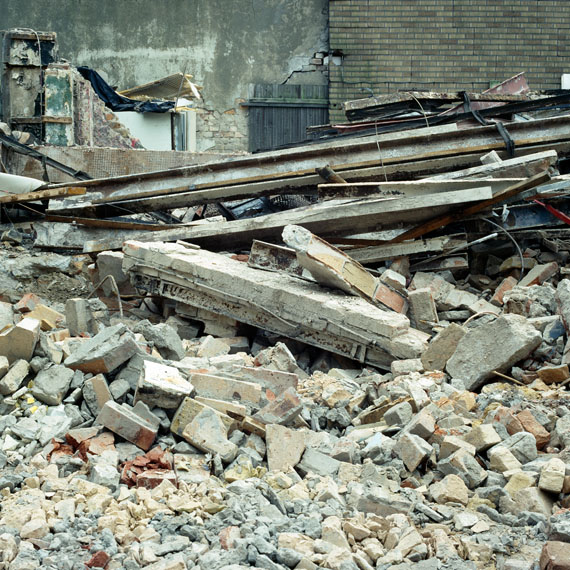
© VG Bild-Kunst, Bonn 2018